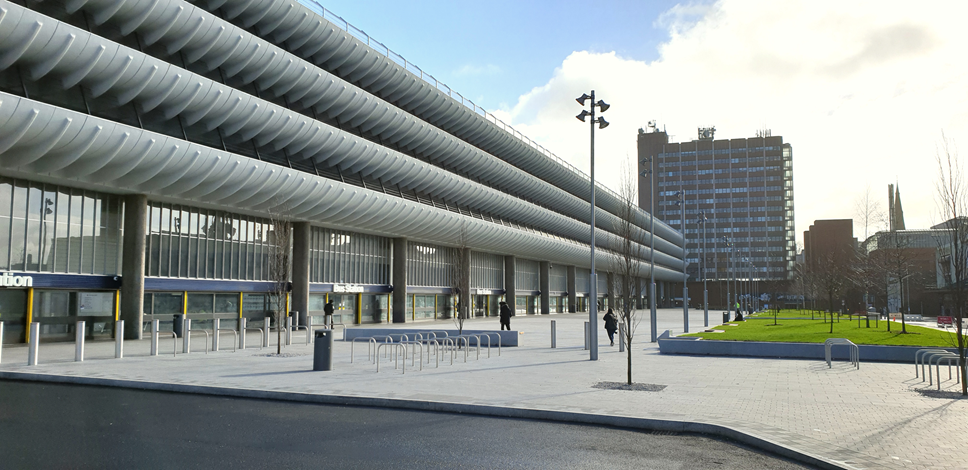
Redevelopment of Preston Bus Station wins Special Award from The Civic Trust
Preston Bus Station's redevelopment has won a Special Award from The Civic Trust for the reuse and adaptation of the building.
A comprehensive redevelopment of the project, which ran from 2015 to 2018, included the creation of a new public space, relocation of the coach station, renovations to the building, changes to the concourse to create new waiting areas and relocation of bus stands.
The architects for the bus station redevelopment work were London-based John Puttick Associates and Preston-based Cassidy+Ashton.
The Grade-II listed building is owned by Lancashire County Council.
County Councillor Charlie Edwards, cabinet member for highways and transport, said: "The redevelopment of Preston Bus Station was always intended to improve and update this iconic building for the people who use it.
"This latest accolade from The Civic Trust recognises this sensitive redevelopment, which was led by John Puttick and his team, in partnership with our own in-house project team.
"Preston Bus Station is a significant civic monument, which we carefully redeveloped to retain the aspects that make it so unique, while making it more suited to modern transport needs.
"Improving key bus stations is a crucial element to our vision of transforming Lancashire's public transport network and ties in with our ambitious Bus Service Improvement Plan, developed in partnership with Blackburn with Darwen Council.
"This improvement plan is the first step into delivering on the National Bus Strategy, Bus Back Better, and will pave the way for improvement measures that will, over time, make public transport the preferred mode of choice in Lancashire."
Built in the Brutalist architectural style between 1968 and 1969, Preston Bus Station was originally designed by Keith Ingham and Charles Wilson of Building Design Partnership with E. H. Stazicker, and engineered by Ove Arup and Partners.
For many years the future of the building was in doubt due to the investment required to bring the bus station up to modern standards. This changed in 2014 when its owners, Preston City Council, approved a deal for Lancashire County Council to take ownership of the building.
The redevelopment project completely rejuvenated the building, which remained operational throughout construction.
Numerous accolades have followed since its completion, including several awards from RIBA, the Royal Institute of British Architects.
The Civic Trust's Special Award for Reuse and Adaptation can now be added to the growing collection, which is presented to schemes that would otherwise be left to decay or be demolished.
The Civic Trust Awards scheme was established in 1959 to recognise outstanding architecture, planning and design in the built environment. The awards recognise projects which have made a positive contribution to the local communities they serve.
Responding to the award, the architect for the project, John Puttick, said: "We are honoured by all the recognition received for the redevelopment of Preston Bus Station.
"This latest award is especially pleasing, as it recognises projects that would have been left to decay or be demolished and which have make a positive contribution to the communities they serve. This is very fitting to Preston Bus Station which is such an important part of the city’s life.
"Preston Bus Station is an impressive example of Brutalist of architecture, and we are proud to have played a role in refurbishing this well-used and well-loved building to meet the needs of today."
The redevelopment of Preston Bus Station included a renovation of the concourse with new lighting, seating and changes to the bus stands. A new external coach station was created in the former taxi rank at the south end of the building, near the Guild Hall.
A new public space was created on the former bus apron with new benches, grassed areas and trees, new lighting and signage. The aim was to increase the connection between the Grade II-Listed building and the city centre.
The new space was carefully designed to keep and improve the views of this well-known building, while adding this space which could be used for different activities and events.
Work also took place on the car park levels including repairs to the concrete, improved lighting, new security cameras, and repairs and improvements to the ramps to make the car park levels more welcoming and to encourage people to park there.
